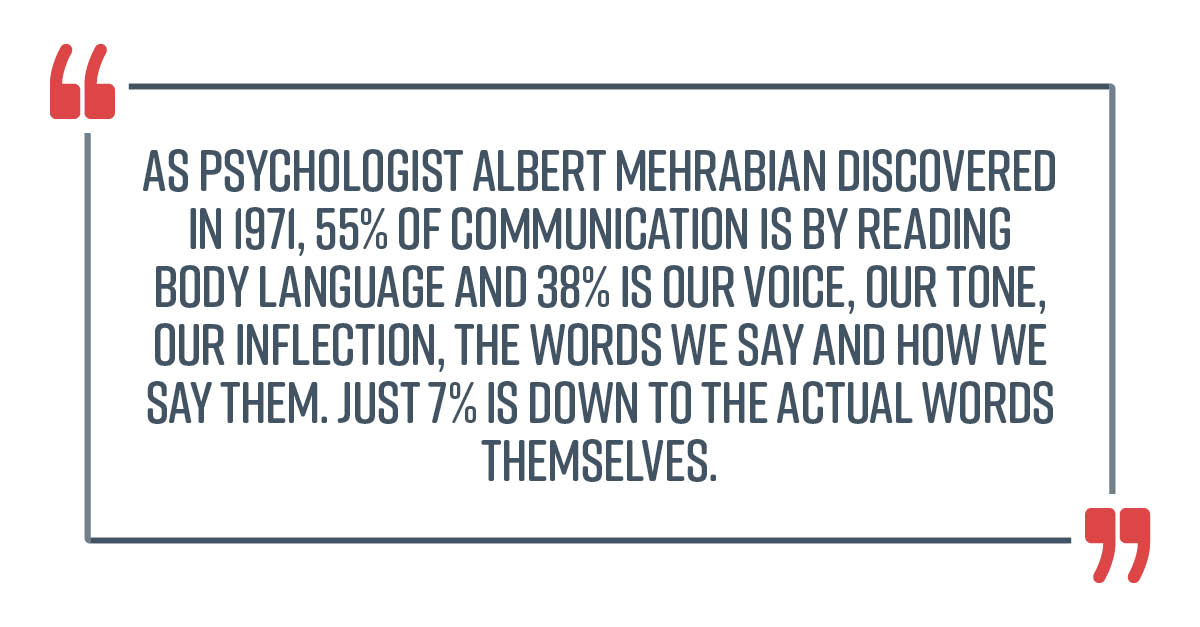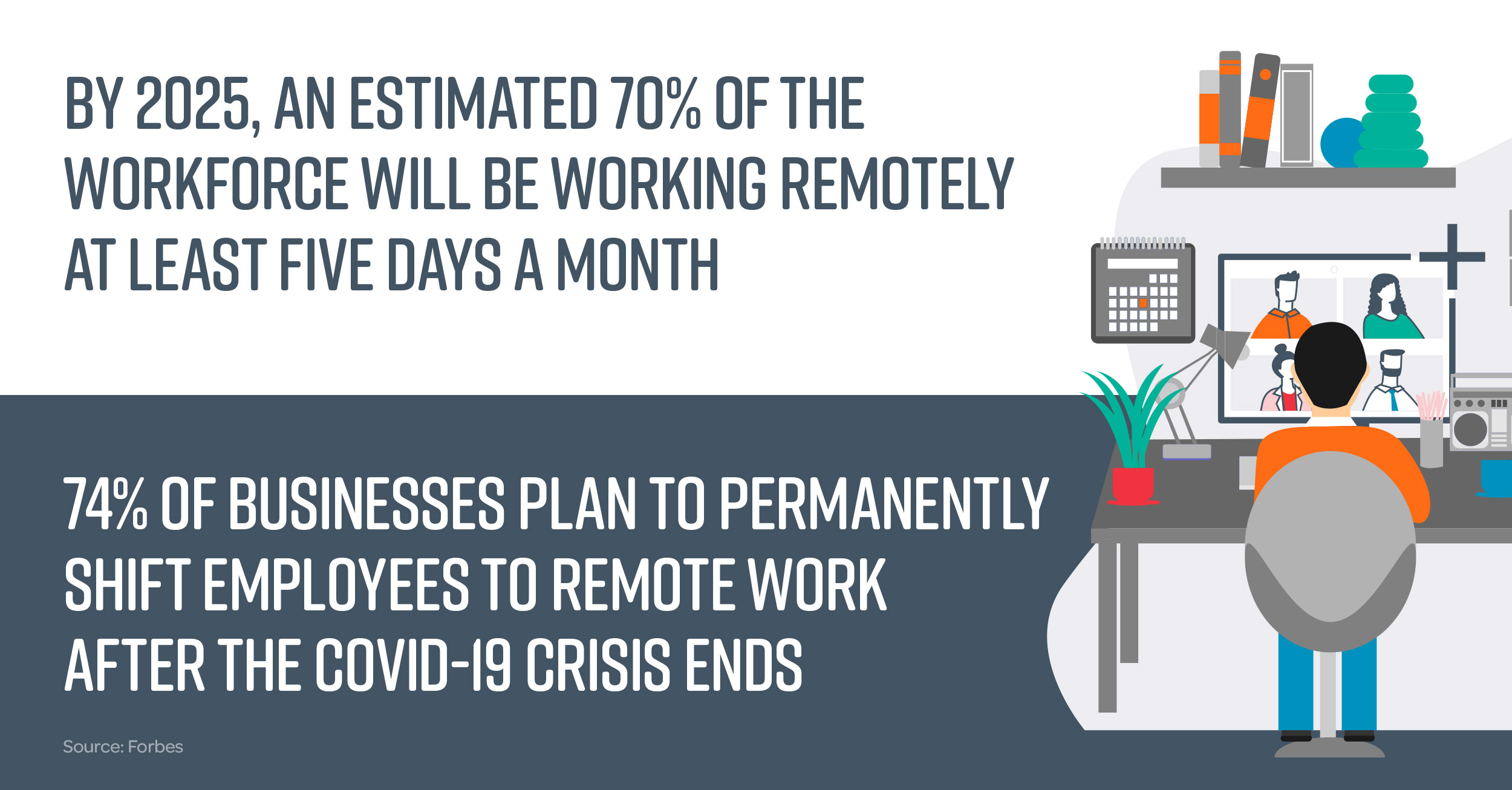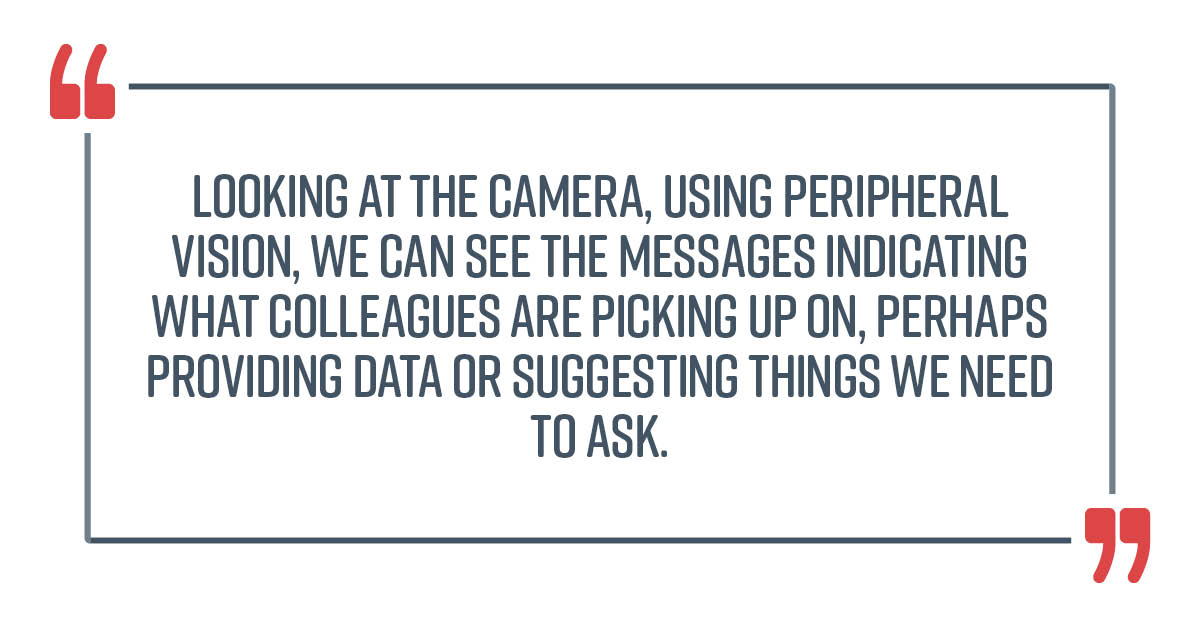‘Cameras on’. Remote negotiation is here to stay. Embrace the process and learn the skills to connect and communicate successfully.
Let’s face it, remote negotiation is something we should have been doing ages ago. After all, we’ve had the technology in place for many years. But, for some reason, people have shied away from it.
Now, COVID-19 has forced us to bite the bullet. We used to come together to negotiate face-to-face, meet in-person and see the whites of our opponent’s eyes. Suddenly, we don’t have that option. And that’s unlikely to change any time soon, because even when restrictions are lifted and we can get close with other people, organizations are not going to rush to restore travel budgets. We’re likely to continue working remotely for much of the future.
So, this is something we need to embrace.
Body Language
Remote negotiation is challenging because when we meet in-person, we pick up clues based on body language. In fact, as psychologist Albert Mehrabian discovered back in 1971, 55% of communication is by reading body language and 38% is our voice, our tone, our inflection, the words we say and how we say them. Just 7% is down to the actual words themselves (Mehrabian, 1971).

A huge amount of communication is associated with body language and reading it. Skilled negotiators rely on it to highlight changes in behaviour.
In the heat of a negotiation, when you’re pushing your opponent and they’re uncomfortable, they may begin to show signs of distress. Picking up on body language gives us real intelligence about how we’re doing.
Cameras On
Even with tools like Zoom and Microsoft Teams, some people are reluctant to turn on their cameras. It makes a big difference without that visual element. And companies realize this. We’re hearing the phrase, we’re a ‘cameras on’ company. So, as organizations have their entire teams working remotely, they’re starting to say, ‘cameras on’.
We need to see each other because that gives vital body language insight. So, when we negotiate, insist that the cameras are on. Don’t let your opponent give you an excuse for not doing so. In fact, prior to the negotiation, set it up.

Rapport
A key part of negotiation concerns building a relationship with the other party. Sales teams do this well. They connect with us, make us their friends and build rapport. Of course, they are trained to do this and some even do it subconsciously. I teach procurement people to try and build rapport with the seller by doing the same things that the seller is doing to us when we negotiate.
In a physical setting, that’s about eye contact, mirroring body language and the types of language patterns they use. We can understand how they see the world very quickly face-to-face but need to find ways to achieve this remotely.
A trained negotiator will take time to get to know the other party, in order to build a relationship, before getting to the actual negotiation itself. Not only does that build rapport and get into their subconscious, it gives us vital information about their body language.
Remote Negotiation in Different Cultures
Recently I’ve worked with a Japanese group, and there’s a struggle to use the technology because it’s counter cultural. In Eastern/middle Eastern societies, the relationship is key. And it’s the same across many parts of southern Europe and southern America. The relationship is more important than anything else and the deal will get done if the relationship is good.
Conversely, in northern Europe, North America and Australia, the deal itself is more important and the relationship is secondary.
So, for relationship-based countries and cultures, the ability to negotiate remotely is further hindered by that need to get to know the other person and trust them before a deal can be done.
Building Skills
To be good at remote negotiation, whether by phone, text, or even email, we can learn skills to do things better. For example, silence can kill negotiations in a phone interview, simply because it is uncomfortable.
Silence can completely change how the negotiation works but can also be used to your advantage. Here, taking time to respond is key.
For email negotiations, it’s important to remember that email is asynchronous. When we send something to the other party, a reply might take some time to come back.
When an email makes you angry, the tendency is to type a response that, perhaps, you shouldn’t send. Now, I’ve done a few of those in my time. And I’ve learnt to not send it until the next morning. On re-reading I have thought, ‘There is no way I can send this missile, let me just tone this down.’ I learnt not to press the send button when I’m angry. So, negotiation with video, through Zoom or Skype or Microsoft Teams, is the preferred media, because we can have an understanding of real-time body language.
Like a television presenter, we need our webcam in front, so we’re not looking down or over to one side. Look down the barrel of the web cam lens and talk to the other person and build rapport – that means being completely focused on communication.
This may require a team approach, involving others whose job is to watch our opponents. They can message us though our mobile phone or iPad. Looking at the camera, using peripheral vision, we can see the messages indicating what colleagues are picking up on, perhaps providing data or suggesting things we need to ask. They’re managing the agenda while we are doing the piece to camera and using the team to watch the room and give us cues.

These skills can actually be taught. They can be learnt. It is about imagining that when looking down that lens, you’re talking to a loved one, somebody close to you and just having a conversation with them. Even down a webcam, even on a Zoom call, you can really connect with the other person.
You can nod as they’re talking and mirror their body language a bit because you’ll see them with your peripheral vision. You’re not looking at them, you’re looking at the camera, but you can begin to connect with them. And that is so powerful because it puts you in the position of control. It makes you the person who is leading that call.
The Future
While enjoying the convenience of all this technology, I am certain we will eventually return to face-to-face negotiation, but not to pre-pandemic levels. Why? For the simple reason that companies have recognised that they can be more efficient by having people work remotely.
The need to travel will just not be there. Organizations won’t want to pay for national and international travel, because they won’t need to. And the impact on the planet will be too great for us to bear.
So, while it’s likely some face-to-face will return, make no mistake, remote negotiation is here to stay.
Written by procurement expert and award-winning author of a series of acclaimed procurement and negotiation books, and the CEO of Positive, Jonathan O’Brien.